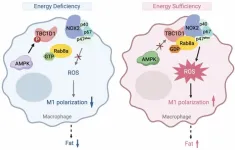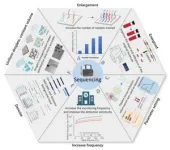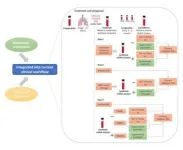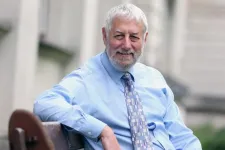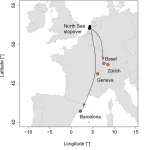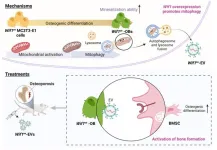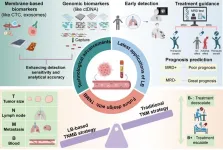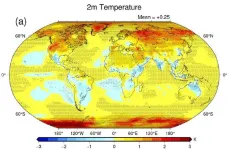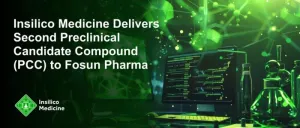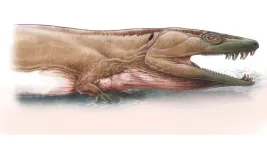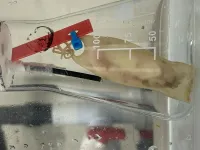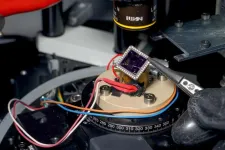TBC1D1 is an energy-responsive polarization regulator of macrophages via governing ROS production in obesity
2024-07-05
(Press-News.org)
This study is led by Dr. Shuai Chen (Model Animal Research Center, School of Medicine, Nanjing University, China) and Dr. Hong-Yu Wang (Model Animal Research Center, School of Medicine, Nanjing University, China).
Metabolic and immune pathways are highly regulated and interwoven by multiple mechanisms to govern metabolic health. Dysregulation of these pathways underlies the development of metabolic diseases such as obesity and type 2 diabetes (T2D), which have become prevalent worldwide in recent years. Thus far, the molecular mechanisms for interaction of metabolic and immune pathways are not fully understood. Shuai Chen and Hong-Yu Wang, together with lab members Qi Wang and Ping Rong, sought to determine the mechanisms for the interaction.
As an important energy sensor, AMP-activated protein kinase (AMPK) can respond to the energy status to maintain metabolic homeostasis. Energy status is associated with the production of reactive oxygen species (ROS) in macrophages, which are elevated in obesity. However, it is not clear how ROS production is upregulated in the presence of sufficient energy in macrophages.
Rab-GTPase activating protein (RabGAP) TBC1D1 is a substrate for AMPK. Previous studies have shown that AMPK kinase can regulate the phosphorylation of serine-231 on TBC1D1 protein, thereby altering its GAP activity. A TBC1D1S231A mutation can elicit a sham energy-sufficient signal. The research group has shown that the TBC1D1S231A mutation results in obesity, hyperglycemia, insulin resistance, hyperlipidemia, nonalcoholic fatty liver and other metabolic diseases in mice. Here, the team found that ROS levels in both bone marrow derived macrophages (BMDMs) and adipose tissue macrophages of TBC1D1S231A mice were significantly higher than those of wild-type mice. Moreover, macrophages from TBC1D1S231A mice exhibited M1-type (classically activated) macrophage polarization. In contrast, ROS levels were significantly reduced in both bone marrow macrophages and adipose tissue macrophages in TBC1D1 knockout (KO) mice that were leaner than WT controls. Macrophages from TBC1D1-KO mice displayed M2-type (alternatively-activated) macrophage polarization. To establish a role of TBC1D1 in macrophages on obesity, the team conducted a bone marrow transfer experiment. Bone marrow from TBC1D1S231A mice was transplanted into wild-type mice, and the recipient mice developed obesity. These data suggest that TBC1D1 is a key regulator of reactive oxygen species production and inflammatory states in macrophages to promote obesity.
The team then investigated how TBC1D1 regulates ROS production in macrophages. They found that TBC1D1 regulated a small G protein Rab8a to govern ROS production in macrophages. The GDP-bound form of Rab8a increased ROS production in cells. Bone marrow-specific Rab8a knockout mice had lighter body weight with reduced M1 polarization. Mechanistically, GDP-bound Rab8a interacted with NADPH oxidase NOX2 in macrophages to promote ROS production. These data suggest that the TBC1D1S231A mutation may augment ROS production by increasing GDP-bound Rab8a, and consequently elicit inflammation.
To further verify the role of ROS in the progression of obesity in TBC1D1S231A mice, the team utilized a ROS scavenger TtSOD that entered the body through the intestine and targeted to macrophages in adipose tissue specifically. TtSOD treatment alleviated the obesity and inflammation in adipose tissue of TBC1D1S231A mice, and also ameliorated metabolic diseases such as hyperglycemia, hyperinsulinemia, hypercholesterolemia and insulin resistance. Moreover, TtSOD treatment also alleviated diet-induced obesity and the associated metabolic disorders such as hyperglycemia, hypercholesterolemia and insulin resistance.
In summary, this study elucidates a novel regulatory mechanism governing ROS production in macrophages in response to energy overload, in which TBC1D1 and its downstream target Rab8a form an energy-responsive complex with NOX2 to control ROS production and consequent inflammation. These findings have implications for drug discovery to combat obesity.
See the article:
TBC1D1 is an energy-responsive polarization regulator of macrophages via governing ROS production in obesity
END
ELSE PRESS RELEASES FROM THIS DATE:
2024-07-05
His journey from a technical officer at ICI Petrochemicals to becoming the Regius Professor of Chemistry at Cardiff University is marked by numerous achievements and accolades, including being elected a Fellow of the Royal Society in 2009.
The Ertl Lecture Award, a tribute to the legacy of Gerhard Ertl, Nobel Laureate in Chemistry in 2007, is an annual accolade that highlights the exceptional work of researchers in the field of catalysis. Sponsored by BASF and established in 2008 by the three Berlin universities (Humboldt University, Technical ...
2024-07-05
Young, naïve starlings are looking for their wintering grounds independently of experienced conspecifics. Starlings are highly social birds throughout the year, but this does not mean that they copy the migration route from each other. By revisiting a classic ‘displacement’ experiment and by adding new data, a team of researchers at the Netherlands Institute of Ecology (NIOO-KNAW) and the Swiss Ornithological Institute (Vogelwarte Sempach) have settled a long-lasting debate. Their findings are now published in the scientific journal Biology Letters.
The question of how migratory birds locate their migration ...
2024-07-05
Osteoporosis is a common disorder, especially in the elderly, characterized by bone loss and increased fracture risk. Treatments target abnormal osteoclast activity but face adherence issues. The disease disrupts the balance between bone resorption and formation. Key factors like Wnt signaling and mitochondrial health influence osteoblast differentiation. However, WIF1's role in regulating mitophagy and osteoblast differentiation remains unclear.
This research investigated the role of WIF1 in controlling the osteogenic differentiation stage of the OB precursor cell line (MC3T3-E1 cells) and assessed ...
2024-07-05
This study was led by Kezhong Chen (Department of Thoracic Surgery, Peking University People’s Hospital & Peking University People’s Hospital Thoracic Oncology Institute). In clinical practice, traditional tumor-node-metastasis (TNM) staging had difficulty achieving accuracy in prognosis stratification at the individual patient level. Researchers therefore proposed to introduce blood minimal residual disease (MRD) status and proposed a new tumor-node-metastasis-blood (TNMB) staging system to more accurately and individually define the postoperative status of lung cancer patients (Fig. 1).
LB, well known for its noninvasiveness, easy accessibility, ...
2024-07-05
An international panel of experts led by the Barcelona Institute for Global Health (ISGlobal), a centre supported by the “la Caixa” Foundation, under the umbrella of the Alzheimer's Association International Society to Advance Alzheimer's Research and Treatment, has produced a consensus statement on sex and gender disparities in resilience to Alzheimer's disease and call for incorporating these differences in future research. The work has been published in Alzheimer's & Dementia: The Journal of the Alzheimer's Association.
Women make up the majority of people with Alzheimer's ...
2024-07-05
One of the key metrics for climate modelling is radiative forcing. Most climate models, including the general circulation models (GCMs), focus on the effects of different atmospheric factors on radiative forcing. However, there are still large uncertainties in satellite observations and multi-model simulations associated with some atmospheric factors. Among them, clouds are a known source of uncertainty in GCMs, leading to radiative biases. However, another possible source of radiative uncertainty is associated with precipitation.
In principle, precipitating particles affect radiative forcing by disrupting incoming shortwave and outgoing longwave radiations. ...
2024-07-05
Insilico Medicine(“Insilico”), a clinical-stage generative artificial intelligence (AI)-driven drug discovery company, has successfully delivered the second preclinical candidate compound (PCC) in its collaboration with Fosun Pharma in June 2024, a potential innovative therapeutic using synthetic lethal strategy for the treatment of solid tumors. Insilico expects to submit the pre-IND application for this candidate with the CDE in 2024 Q4.
When initiating the collaboration, Fosun Pharma proposed four targets of interest, and the target of the PCC nominated in this program is one of them and plays a critical role in DNA damage repair mechanisms. Insilico’s ...
2024-07-05
After three years of meticulous study, an international team of researchers has announced the discovery of a fossilised giant basal tetrapod in Namibia's arid heartland in Nature. A basal tetrapod is an early four-legged vertebrate with fingers and toes, which lived during the transition from water to land. These ancient carnivores are among the earliest ancestors of all modern animals. This nearly complete 3-meter-long skeleton of an adult, unearthed in the Ugab River valley in Damaraland, is the largest ever discovered. This discovery is significant because it challenges previous assumptions that these early four-legged vertebrates, which lived during ...
2024-07-05
An ongoing research project into the impact of offshore windfarm electromagnetic fields on shark development reveals that the alternating electric currents produced by underwater windfarm cables seems not to disrupt the growth or survival of sharks.
Offshore windfarms are one of the most common marine renewable energy (MRE) producers, and are seen as a pivotal technology in the global transition towards renewable energy and away from fossil fuels that contribute to climate change.
However, their proliferation in marine environments raises new questions about their impacts on wildlife. Energy operators and ...
2024-07-05
To perform quantum computations, quantum bits (qubits) must be cooled down to temperatures in the millikelvin range (close to -273 Celsius), to slow down atomic motion and minimize noise. However, the electronics used to manage these quantum circuits generate heat, which is difficult to remove at such low temperatures. Most current technologies must therefore separate quantum circuits from their electronic components, causing noise and inefficiencies that hinder the realization of larger quantum systems beyond the lab.
Researchers in EPFL’s Laboratory of ...
LAST 30 PRESS RELEASES:
[Press-News.org] TBC1D1 is an energy-responsive polarization regulator of macrophages via governing ROS production in obesity
